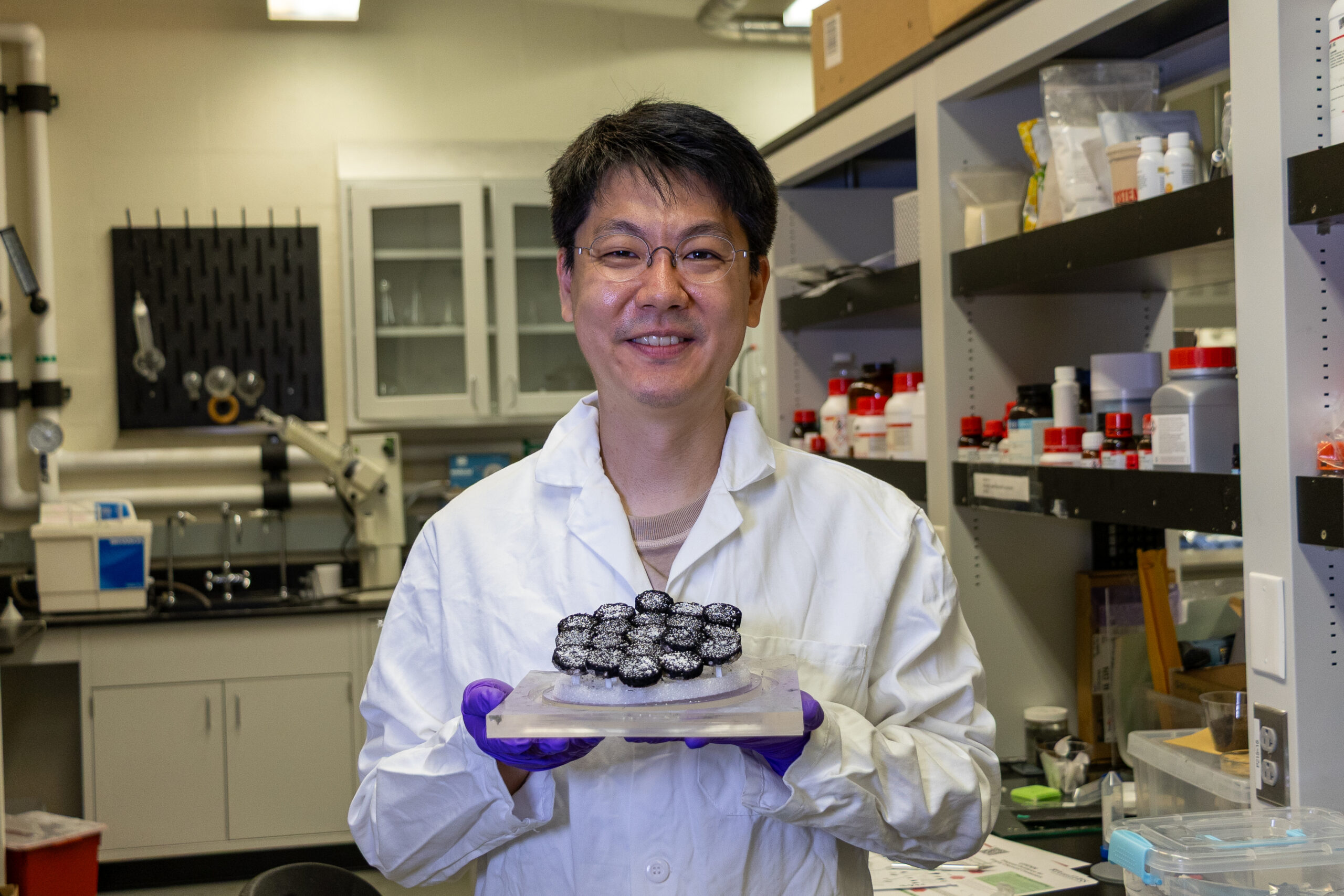Sunflower Spirals and Raspberry Beads: A Nature-Inspired Leap in Water Harvesting Technology
Published on by Water Network Research, Official research team of The Water Network in Academic
Tackling large socio-environmental issues like climate change and global freshwater scarcity takes bold, interdisciplinary experts with an eye for natural solutions. Shu Yang, Joseph Bordogna Professor and Chair of Materials Science and Engineering, has already leveraged both her engineering expertise and biomimicry approach to develop kirigami-inspired fog collectors and dehydrating devices for both wood and food. Now, alongside postdoctoral fellow Yunchan Lee, she leads a research team at Penn Engineering that is working to develop a new material and device that imitate two unlikely products of nature: raspberries and sunflowers. Together, these bio-inspired forms make clean, sustainable water harvesting possible by using just the moisture in the air and the heat of the sun.
Published in Advanced Functional Materials , their recent study introduces a scalable, solar-driven water harvesting device that collects moisture from the air using specially engineered, raspberry-like microbeads that are mounted on disks patterned after sunflower seed arrangements.
“A major focus of my lab’s work is water harvesting in eco-friendly ways,” says Yang, who also has an appointment in Chemical and Biomolecular Engineering. “While our fog collectors are great at pulling water droplets from the atmosphere, these devices only work in a few places with fog. In most environments, we have to be able to collect water in its gaseous state. Even deserts have humidity. The challenge isn’t whether there’s water in the air, it’s how to efficiently pull it out.”

Yunchan Lee holding the sunflower disks inlaid with the raspberry microbeads in an array that provides a proof of concept for this new approach to water harvesting.
From Fog to Vapor: Rethinking Atmospheric Water Harvesting
When Yang and colleagues developed their fog-collecting devices, they relied heavily on geometry as the key to their success. The kirigami structures were designed to create mini vortices that would capture and collect water droplets on the surface of the material. When collecting water vapor, material type becomes extremely important, although choosing the correct material was not exactly straightforward.
Yang and Lee looked at traditional desiccants like silica gel and salts, which can absorb water vapor, but they both come with major downsides.
“Silica gel, like the little packets of beads you find in dehydrated food or packaging for humidity-sensitive products, works slowly, often taking hours to reach saturation,” says Lee. “These materials would also require a lot of energy to release the water once it is collected. Salts are also not ideal. While they are highly hygroscopic, or good at capturing moisture from the air, they are difficult to reuse and are often corrosive.”
So the team explored hydrogels — polymeric materials that swell as they absorb water. Hydrogels are reusable and can retain large amounts of water, but they don’t attract moisture as strongly as salts do.
Taxonomy
- Water Harvesting
- Technology
- Water Harvesting
- Water Harvesting Structure Design
- Water from Air
- Domestic Water Use